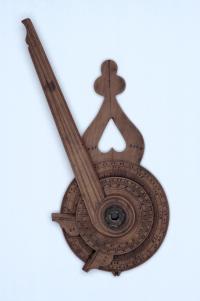 I recently came across a reference for a “nocturnal for both bears.” It sounded, at first, like a piece of music written by Mussorgsky or perhaps Prokofiev, which it isn’t. It is a device used for telling time at night by the position of Polaris and the stars of the constellation Ursa Major, the “big bear.”
I recently came across a reference for a “nocturnal for both bears.” It sounded, at first, like a piece of music written by Mussorgsky or perhaps Prokofiev, which it isn’t. It is a device used for telling time at night by the position of Polaris and the stars of the constellation Ursa Major, the “big bear.”
The instrument, known in English as a noctural and in French as a nocturlabe, is essentially an astroble to be used at night. As the pole star, Polaris, is in the constellation Ursa Minor, the “little bear” and the device involves sighting the stars from both big and little bears, the device is a “nocturnal for both bears.” It was first developed in the 1500s and was used up into the 18th century. As a device used for telling time at night, it was apparently only accurate to within 15 minutes or so.
How does it work? An explanation from Scientific Instruments, 1500-1900: An Introduction, by Gerard L’Estrange Turner and Andrew Turner.
In appearance, it looks like a small, circular table-tennis bat with a calendar scale engraved on it. Rotating over this is a disc marked with two periods of twelve hours (sometimes with night hours only, 8 pm to 8 am). The hour positions are usually notched for counting by feel, the 12 o’clock having a larger notch. Above this disc is a long rotating pointer, and the central rivet has a hole. To tell the time, the 12 o’clock is set to the date. the instrument is held upright, the Pole Star sighted through the hole, and the pointer turned to be in line with the Guards of the Bear, i.e. the two prominent stars a and b in the constellation that align with the Pole Star. The time is shown by the pointer cutting the hour disc.

Goes off to invent a solar powered digital version so you can actually see the time in the dark. 🙂